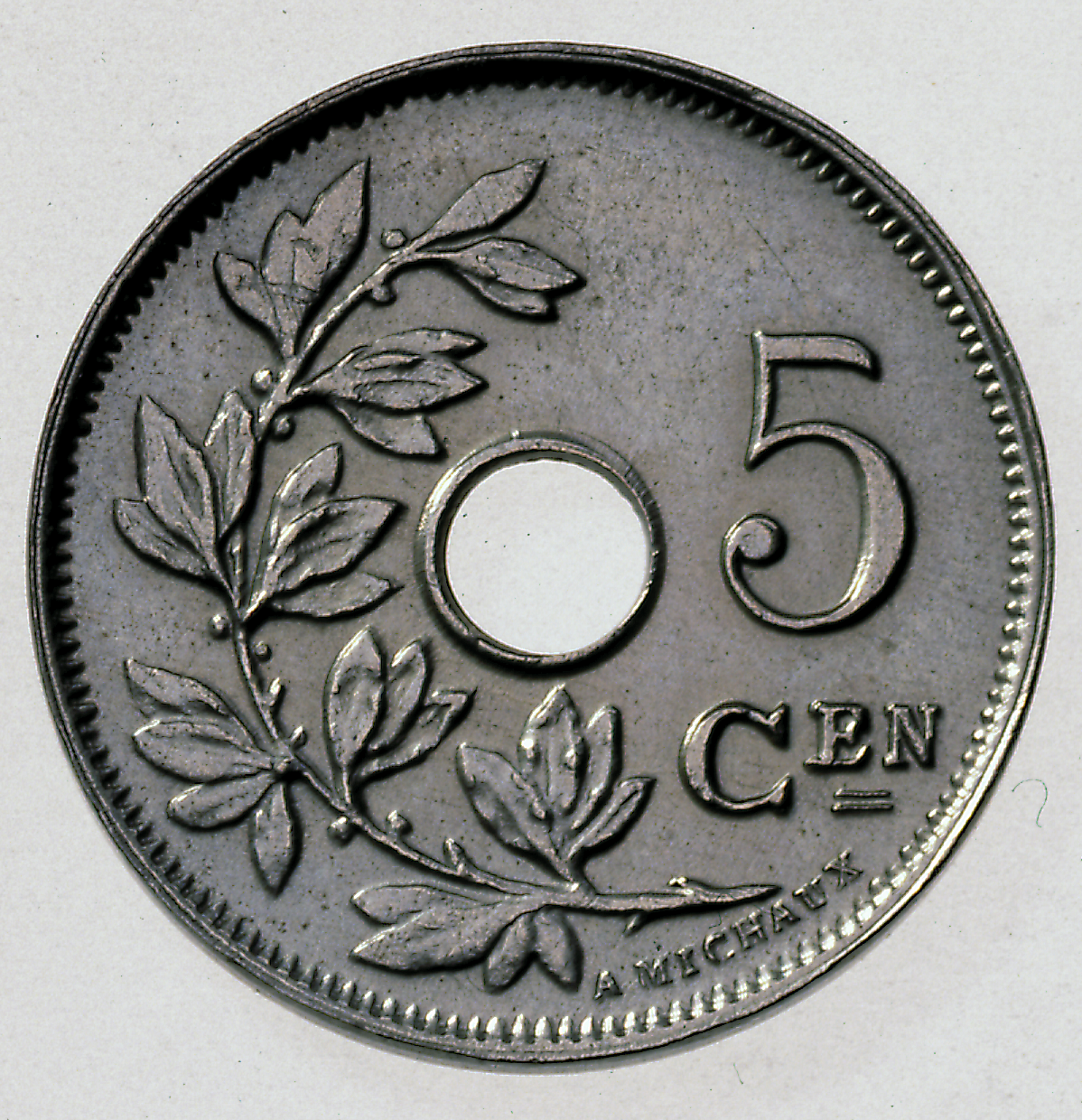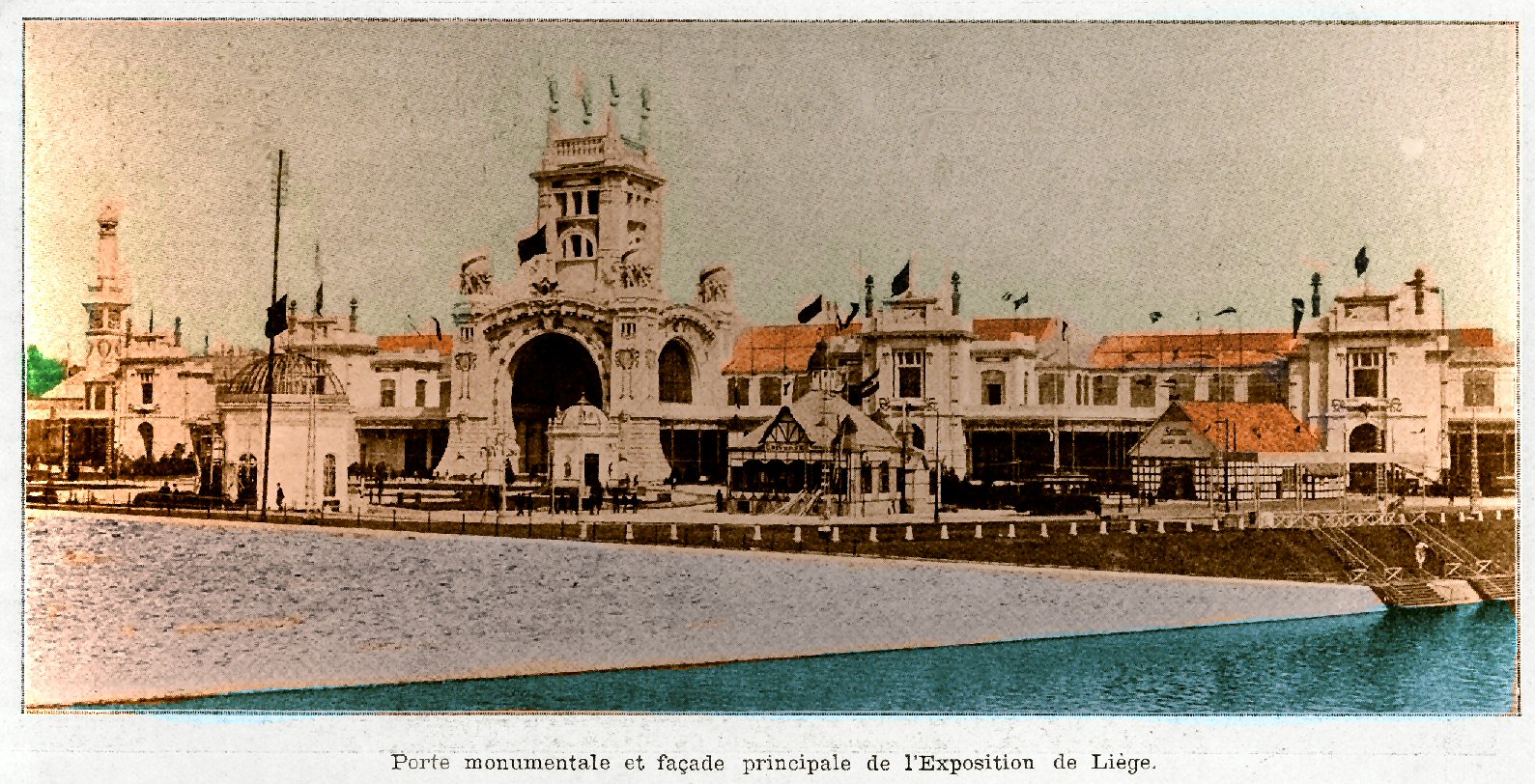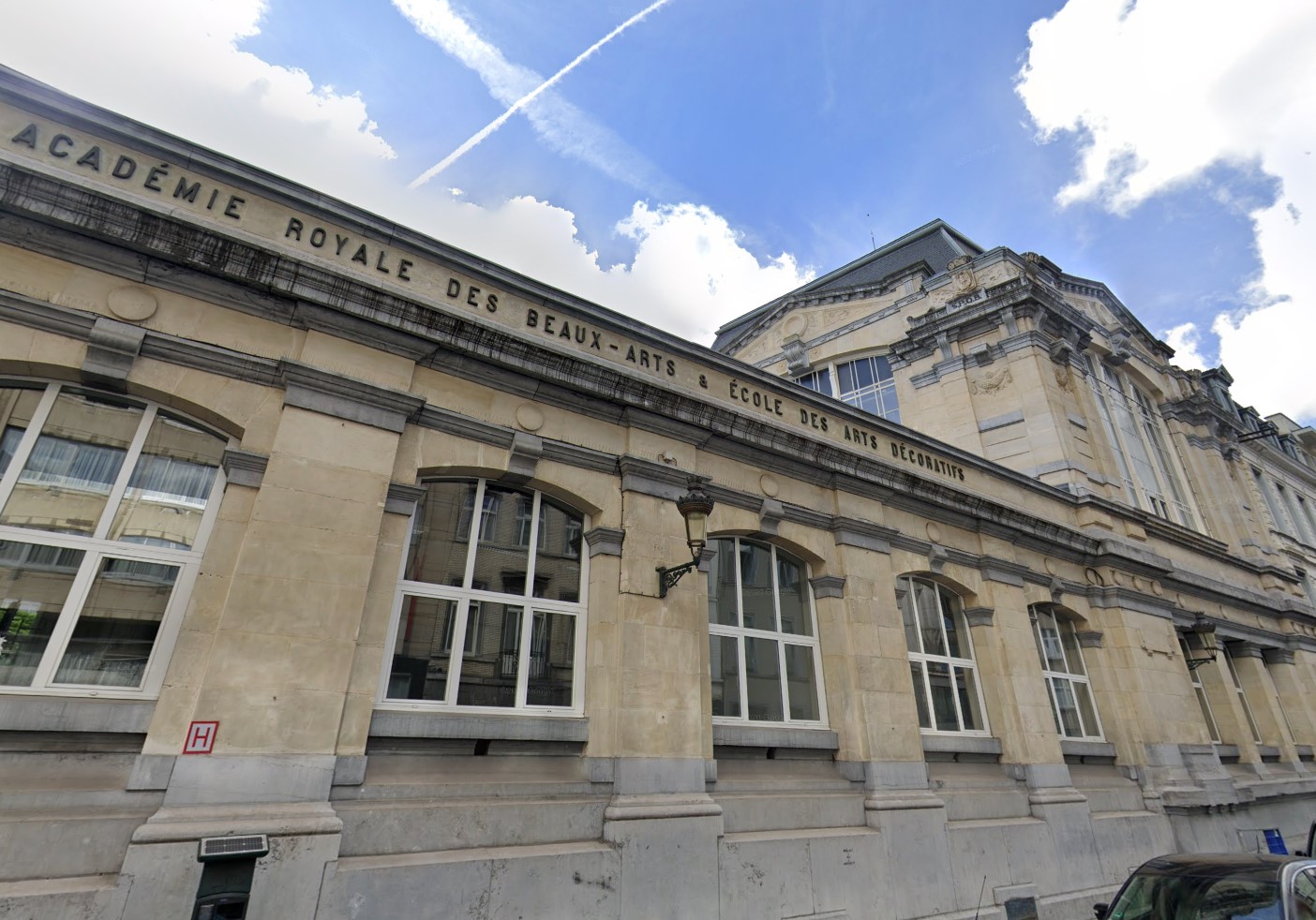|
Alphonse Michaux
Alphonse Michaux (1860–1928) was a Belgian coin engraver and medalist. Michaux was born in Brussels on 15 December 1860. He was the son of Belgian engraver Robert Michaux (1824–1901), and as a young man studied at the Academy of Fine Arts in Brussels. Career Michaux was appointed chief engraver of the Brussels Mint (La Monnaie de Bruxelles) in 1895. As a coin designer, he is best known for engraving dies for a series of Belgian coins with a distinctive hole in the center. These coins started circulation in 1901 when 5 and 10 centimes coins were released. The 25 centimes coin was first released in 1908. Michaux also engraved coins for Luxembourg, Iran, Romania, and Colombia. These coins are signed either "A. Michaux" or "A.M." on the obverse. Medal designs Michaux's medals include: * 1888 – ''Ville de Tournai Halle aux Draps Exposition 1888'' * 1891- Jean-Servais Stas Jubilaire (50 years) * 1894 – Jeton (28 mm) for ''Exposition Universelle d'Anvers'' * 1895 � ... [...More Info...] [...Related Items...] OR: [Wikipedia] [Google] [Baidu] |
Medalist
A medalist (or medallist) is an artist who designs medals, plaquettes, badges, metal medallions, coins and similar small works in relief in metal. Historically, medalists were typically also involved in producing their designs, and were usually either sculptors or goldsmiths by background. In modern times, medalists are mostly primarily sculptors of larger works, but in the past the number of medals and coins produced were sufficient to support specialists who spent most of their career producing them. From the 19th century, the education of a medalist often began with time as an engraver, or a formal education in an academy, particularly modeling and portraiture. On coins, a mark or symbol signifying the medalist as the original designer was often included in a hidden location and is not to be mistaken for the symbol of the mint master. Artistic medals and plaquettes are often signed prominently by the artist. Background Artistic medals have been produced since the late Renaissa ... [...More Info...] [...Related Items...] OR: [Wikipedia] [Google] [Baidu] |
Adolphe, Grand Duke Of Luxembourg
Adolphe (Adolf Wilhelm August Karl Friedrich; 24 July 1817 – 17 November 1905) was Grand Duke of Luxembourg from 23 November 1890 to his death on 17 November 1905. The first grand duke from the House of Nassau-Weilburg, he succeeded King William III of the Netherlands, ending the personal union between the Netherlands and Luxembourg. Adolphe was Duke of Nassau from 20 August 1839 to 20 September 1866, when the Duchy was annexed to the Kingdom of Prussia. Adolphe became Duke of Nassau in August 1839, following the death of his father William. The Duchy was annexed to Prussia after Austria's defeat in the Austro-Prussian War. From 1815 to 1839, Grand Duchy of Luxembourg was ruled by the kings of the Netherlands as a province of the Netherlands. Following the Treaty of London (1839), the Grand Duchy of Luxembourg became independent but remained in personal union with the Netherlands. Following the death of his sons, the Dutch king William III had no male heirs to succeed him. In th ... [...More Info...] [...Related Items...] OR: [Wikipedia] [Google] [Baidu] |
Artists From Brussels
An artist is a person engaged in an activity related to creating art, practicing the arts, or demonstrating an art. The common usage in both everyday speech and academic discourse refers to a practitioner in the visual arts only. However, the term is also often used in the entertainment business, especially in a business context, for musicians and other performers (although less often for actors). "Artiste" (French for artist) is a variant used in English in this context, but this use has become rare. Use of the term "artist" to describe writers is valid, but less common, and mostly restricted to contexts like used in criticism. Dictionary definitions The ''Oxford English Dictionary'' defines the older broad meanings of the term "artist": * A learned person or Master of Arts. * One who pursues a practical science, traditionally medicine, astrology, alchemy, chemistry. * A follower of a pursuit in which skill comes by study or practice. * A follower of a manual art, such as ... [...More Info...] [...Related Items...] OR: [Wikipedia] [Google] [Baidu] |
Queen Elizabeth Of Belgium
Elisabeth of Bavaria (Elisabeth Gabriele Valérie Marie; 25 July 187623 November 1965) was Queen of the Belgians from 23 December 1909 to 17 February 1934 as the spouse of King Albert I, and a duchess in Bavaria by birth. She was the mother of King Leopold III of Belgium and of Queen Marie-José of Italy, and grandmother of Kings Baudouin and Albert II of Belgium, and Grand Duchess Joséphine-Charlotte of Luxembourg. Family Born in Possenhofen Castle, her father was Karl-Theodor, Duke in Bavaria, head of a cadet branch of the Bavarian royal family, and an ophthalmologist. She was named after her paternal aunt, Empress Elisabeth of Austria, better known as Sisi. Her mother was Maria Josepha of Portugal, daughter of exiled Miguel I of Portugal. Charlotte, Grand Duchess of Luxembourg, Empress Zita, the last Empress of Austria and Queen of Hungary, and Felix of Bourbon-Parma, husband of Grand Duchess Charlotte and brother of Empress Zita, were among Elisabeth's first cousins. ... [...More Info...] [...Related Items...] OR: [Wikipedia] [Google] [Baidu] |
Albert I Of Belgium
Albert I (8 April 1875 – 17 February 1934) was King of the Belgians from 23 December 1909 until his death in 1934. Born in Brussels as the fifth child and second son of Prince Philippe, Count of Flanders and Princess Marie of Hohenzollern-Sigmaringen, Albert succeeded his uncle, Leopold II, to the Belgian throne in 1909. He married Elisabeth of Bavaria, with whom he had three children. Albert ruled during an eventful period in the history of Belgium, which included the period of World War I (1914–1918), when most of Belgium was occupied by German forces. Other crucial events of his reign included the adoption of the Treaty of Versailles in June 1919, the ruling of the Belgian Congo as an overseas possession of Belgium along with the League of Nations mandate of Ruanda-Urundi, the reconstruction of Belgium following the war, and the first five years of the Great Depression (1929–1934). Albert died in a mountaineering accident in eastern Belgium in 1934, at the age ... [...More Info...] [...Related Items...] OR: [Wikipedia] [Google] [Baidu] |
Carol I Of Romania
Carol I or Charles I of Romania (20 April 1839 – ), born Prince Karl of Hohenzollern-Sigmaringen, was the monarch of Romania from 1866 to his death in 1914, ruling as Prince (''Domnitor'') from 1866 to 1881, and as King from 1881 to 1914. He was elected Prince of the Romanian United Principalities on 20 April 1866 after the overthrow of Alexandru Ioan Cuza by a palace coup d'état. In May 1877, Romania was proclaimed an independent and sovereign nation. The defeat of the Ottoman Empire (1878) in the Russo-Turkish War secured Romanian independence, and he was proclaimed King on . He was the first ruler of the Hohenzollern-Sigmaringen dynasty, which ruled the country until the proclamation of a socialist republic in 1947. During his reign, Carol I personally led Romanian troops during the Russo-Turkish War and assumed command of the Russo/Romanian army during the siege of Plevna. The country achieved internationally recognized independence via the Treaty of Berlin, 1878 and acqu ... [...More Info...] [...Related Items...] OR: [Wikipedia] [Google] [Baidu] |
Haiti
Haiti (; ht, Ayiti ; French: ), officially the Republic of Haiti (); ) and formerly known as Hayti, is a country located on the island of Hispaniola in the Greater Antilles archipelago of the Caribbean Sea, east of Cuba and Jamaica, and south of The Bahamas and the Turks and Caicos Islands. It occupies the western three-eighths of the island which it shares with the Dominican Republic. To its south-west lies the small Navassa Island, which is claimed by Haiti but is disputed as a United States territory under federal administration."Haiti" ''Encyclopædia Britannica''. Haiti is in size, the third largest country in the Caribbean by area, and has an estimated population of 11.4 million, making it the most populous country in the Caribb ... [...More Info...] [...Related Items...] OR: [Wikipedia] [Google] [Baidu] |
Liège International (1905)
''Exposition Universelle et Internationale de Liège'' was a world's fair held in Liège from 27 April to 6 November 1905 just 8 years after a Belgian exposition held in Brussels. Intended to show Liège's industrial importance it also marked 75 years of Belgian independence and 40 years of Leopold II's reign. The exposition received 7 million visitors, covered 52 acres and made 75,117 Belgian Francs. Participants and exhibits Twenty-nine countries were official participants, from Europe: Austria, Bulgaria, Denmark, France, Greece, Hungary, Italy, Luxembourg, Montenegro, Norway, Netherlands, Portugal, Romania, Russia, Serbia, Sweden, Switzerland, and the United Kingdom; from Africa: Egypt and Congo Free State; from America: Argentina, Brazil, Canada, Cuba, and the United States; and from Asia China, Japan, Persia and Turkey. Germany and Spain were unofficial participants There was an exhibition of medieval and Renaissance art, ''L'art ancien au Pays de Liège'', as part of th ... [...More Info...] [...Related Items...] OR: [Wikipedia] [Google] [Baidu] |
Exposition Internationale D'Anvers (1894)
Exposition Internationale d'Anvers was a World's Fair held in Antwerp, Belgium between 5 May and 5 November in 1894. It covered , attracted 3 million visits and made a profit. It took place at the same location as the Exposition Universelle d'Anvers, held in 1885. Participating nations There were several participating nations: * German Empire * Austro-Hungarian Empire * Bulgaria * China, Congo, Denmark, Spain, United States, United Kingdom, Greece, Hungary, Italy, Luxembourg, Mexico, Persia, Portugal, Kingdom of Romania, Russia, the South African Republic (for which Gerard Jacob Theodoor Beelaerts van Blokland was ''Commissaire Général''), Switzerland and the Ottoman Empire. There was also a joint presence from Sweden and Norway. As well as Netherlands itself there were presentations of the Dutch East Indies including Java, parts of Sumatra and Madura. Fair officials Count Hippolyte d'Ursel was the commissioner general and Count de Pret Roose de Calesburg the preside ... [...More Info...] [...Related Items...] OR: [Wikipedia] [Google] [Baidu] |
Brussels Academy
The Royal Academy of Fine Arts of Brussels (french: Académie Royale des Beaux-Arts - École supérieure des Arts de la Ville de Bruxelles (ARBA-ESA), nl, Koninklijke Academie voor Schone Kunsten van Brussel) is an art school established in Brussels, Belgium. It was founded in 1711. Starting from modest beginnings in a single room in Brussels' Town Hall, it has since 1876 been operating from a former convent and orphanage in the /, which was converted by the architect . The school has played an important role in training important local artists. History Origins Historically, artistic training in Brussels was organised in traditional workshops where masters would teach their skills to pupils. The masters needed to be registered with their local guild to be able to practice their craft. On 30 September 1711, the magistrate of the City of Brussels gave the guilds of painters, sculptors, weavers and other amateurs the use of a room in Brussels' Town Hall to teach drawing class ... [...More Info...] [...Related Items...] OR: [Wikipedia] [Google] [Baidu] |
Jean-Servais Stas
Jean Servais Stas (21 August 1813 – 13 December 1891) was a Belgian analytical chemist who co-discovered the atomic weight of carbon. Life and work Stas was born in Leuven and trained initially as a physician. He later switched to chemistry and worked at the École Polytechnique in Paris under the direction of Jean-Baptiste Dumas. Stas and Dumas established the atomic weight of carbon by weighing a sample of the pure material, burning it in pure oxygen, and then weighing the carbon dioxide produced. In 1840, Stas was appointed professor at the Royal Military School in Brussels. He acquired international fame by determining the atomic weights of the elements more accurately than had ever been done before, using an atomic mass of 16 for oxygen as his standard. His results disproved the hypothesis of the English physicist William Prout that all atomic weights must be integer multiples of that of hydrogen. These careful, accurate atomic weight measurements of Stas helped la ... [...More Info...] [...Related Items...] OR: [Wikipedia] [Google] [Baidu] |





